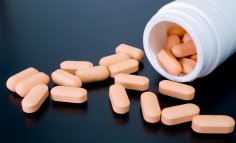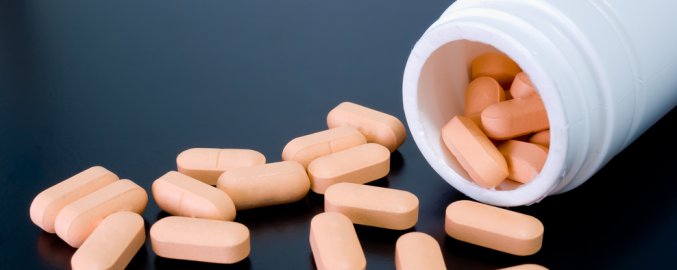Discussion
Our data demonstrate that over a wide span of serum T concentrations within the broad physiological range, T administration had no significant effect on plasma lipids, apolipoproteins, insulin sensitivity, and CRP. Only the highest dose of T enanthate (600-mg/wk) that produced supraphysiological T concentrations was associated with significant lowering of plasma HDL-C and apolipoprotein A-I levels. We recently reported that T dose-dependently increases fat-free mass and muscle size (16); significant increases in fat-free mass and muscle volume were observed with 125-, 300-, and 600-mg doses. Taken together with the data reported previously, the current study demonstrates that significant gains in fat-free mass, muscle size, and muscle strength can be achieved at T doses that do not significantly affect insulin sensitivity, CRP, plasma lipids, and apolipoproteins in a population of healthy young men.
Androgen effects on plasma HDL-C depend on the dose, type of androgen used (aromatizable or not), and route of administration (oral or parenteral). Supraphysiological doses of androgens, especially orally administered, nonaromatizable, androgenic steroids, undoubtedly decrease plasma HDL-C levels (33, 34, 35, 36). When nonaromatizable androgens such as stanozolol are administered, the response is a marked reduction in HDL-C, particularly the HDL-C2 fraction, and a significant increase in LDL-C levels. (33). However, in several placebo-controlled studies of older men, physiological T replacement had minimal or no effect on plasma HDL-C levels (3, 4, 5, 6).
Several epidemiological studies have reported a direct relationship between circulating T concentrations and plasma HDL-C levels (37, 38, 39, 40, 41, 42). For instance, in the Telecom study (38), men with normal and low T were compared for cardiovascular risk factors. The men with low T had a higher body mass index, waist/hip ratio, systolic blood pressure, fasting and 2 h blood glucose, total cholesterol, LDL-C, apolipoprotein B, and fasting and 2-h plasma insulin and lower values of HDL-C and apolipoprotein A-I. Importantly, SHBG levels were also lower in the low T group. Because SHBG levels affect total T concentrations, it is possible that the association between total T and plasma HDL-C concentrations found in cross-sectional epidemiological studies is a reflection of the effects of higher insulin levels in men with higher body mass index on SHBG concentrations. Indeed, the bioavailable T levels were not significantly different between the two groups in the Telecom study. A direct relationship between plasma T and HDL-C concentrations was also shown in the Multiple Risk Factor Intervention Trial (37). It is not clear whether the relationship between T and HDL-C is independent of other correlates, particularly the effects of obesity on SHBG concentrations. Factors that may influence both HDL and T include coexisting disease states, obesity and body fat distribution, and lifestyle factors, such as smoking, alcohol, and exercise. Some of the factors that decrease HDL-C may also be associated with lower SHBG levels and might indirectly affect T levels.
In our study changes in apolipoprotein A-I levels were inversely correlated with serum T concentrations. Because apolipoprotein A-I, a component of HDL particles, is thought to be cardioprotective, and its levels are inversely related to cardiovascular risk, the decrease in apolipoprotein A-I at the 600-mg dose of T enanthate might be viewed as deleterious.
The effects of T administration on glucose metabolism and insulin sensitivity remain poorly understood. Total T levels are inversely related to insulin concentrations in several cross-sectional studies (39, 42, 43, 44, 45). Fasting insulin levels are higher and T and SHBG values are lower in men with type 2 diabetes mellitus (39). Haffner et al. ( 39) reported that lower T levels were correlated with a higher waist/hip ratio and lower nonoxidative, whole body glucose disposal in men. Administration of exogenous androgens has been reported to induce glucose intolerance and hyperinsulinemia in some studies (20, 21, 22), but other studies found no significant changes in glucose tolerance or insulin concentrations with administration of T or 19-nor-T to men even at pharmacological doses (46). A marked lowering of T levels in the male rat by surgical castration as well as the administration of supraphysiological doses of T induces insulin resistance (20). This suggests that the relationship between T levels and insulin sensitivity might be curvilinear. Our study failed to find any significant changes in SI, SG, and AIRG in any treatment group over a wide range of serum T concentrations. Our data differ from those of Marin (17, 18, 19, 47), who reported improvements in insulin sensitivity, blood glucose, and blood pressure after T supplementation in middle-aged men who had visceral obesity and low T levels. In contrast to the studies by Marin et al. (17, 18, 19, 47), the subjects in our study were younger and had significantly lower fat mass. Marin et al. used euglycemic-hyperinsulinemic clamp, whereas we used frequently sampled iv glucose tolerance test to assess insulin sensitivity; we do not know whether the differences in methodology could have contributed to the observed differences in outcomes. We cannot exclude the possibility that in middle-aged men with midsegment obesity, T might decrease whole body and intraabdominal fat and thereby improve insulin sensitivity.
Serum T levels are inversely correlated with fat mass, particularly visceral fat area (45, 48). The induction of androgen deficiency in young men is associated with a decrease in lipid oxidation rates and an increase in total fat mass (10). T replacement of young (8, 9, 12) and older hypogonadal men (5) decreases fat mass. T inhibits uptake of labeled triglycerides and enhances lipid mobilization from the visceral fat (49). As fat mass is an important determinant of insulin sensitivity (50), T supplementation would be expected to improve the latter by decreasing fat mass. It is possible that we did not observe changes in insulin sensitivity in this study because our participants were lean.
CRP, an inflammation-sensitive marker, has emerged as an important independent predictor of coronary events (23, 52). In mice, both constitutive and IL-6-dependent expressions of CRP transgene require T (53, 54). Furthermore, treatment with T results in an increase in CRP in male rats (54). Our data did not show a significant change in CRP levels at any dose of T in healthy young men.
In conclusion, only the 600-mg dose of T enanthate, which was associated with highly supraphysiological T concentrations, decreased HDL-C and apolipoprotein A-I levels in healthy young men. Over a wide range of T concentrations, there was no significant change in plasma lipids, apolipoproteins, insulin sensitivity, and CRP concentrations. Whereas significant gains in fat-free mass and muscle size were observed with the 125- and 300-mg doses of T, these doses were not associated with a concurrent deterioration in the lipoprotein profile, CRP levels, or insulin sensitivity. Several studies are in agreement that significant gains in fat-free mass and muscle strength can be accrued in healthy hypogonadal men (8, 9, 10, 11, 12), older men with low T levels (3, 5), and human immunodeficiency virus-infected men with weight loss (7) by increasing serum T concentrations from hypogonadal levels into a range that is mid-normal for healthy young men. Thus, physiological T replacement in hypogonadal states may improve muscle mass without adversely affecting the cardiovascular risk factors. Although long-term studies are needed to determine directly the effects of T supplementation on cardiovascular event rates and atherosclerosis progression, our data do not support the idea that T replacement in doses that raise serum T concentrations into the mid to high normal range will necessarily adversely affect the risk of atherosclerotic heart disease.
















